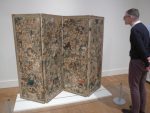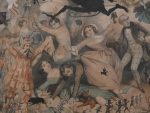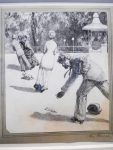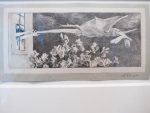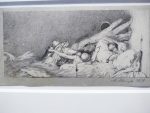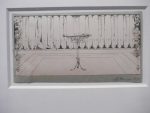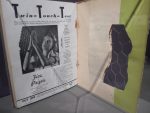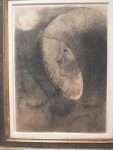A few interesting and little-known works from the Symbolist and Surrealist movements.
“Paraphrase on the Finding of a Glove”, a series of then etchings from 1887 by Max Klinger which tell an enigmatic, dreamlike story with no clear structure.
This was at one of Berlin’s several state museums whose mission and operations are peculiar, ethically questionable, and sadly lagging behind how the rest of the world runs its cultural institutions. Each museums contains only the collection of one rich collector and it bears his (they’re always men) name. The holdings are whatever he chose, rather than being developed and nurtured over time by curators working in the public interest and having accountability to a board of trustees and, if it’s a public institution, the taxpayers, which is how museums normally work. It’s as though the Guggenheim Museum only displayed whatever Mr. Guggenheim had owned in his lifetime, which it certainly does not do. And the Guggenheim is private, not public like these Berlin museums, so if even they did only show his collection that would be their prerogative.
This strange practice of establishing separate public museums each for the collection of one ultra-rich person has been the operating principle for the Berlin State Museums for a century or so. The collections just sit there, intact and unchanging, and it means works of any given artist or period are often scattered among several museums. They virtually never have temporary exhibitions.
It all reeks of tax evasion on the part the collectors with cooperation from uninformed public authorities who seem to have been out of the loop for quite some time on the role museums play in society nowadays. The director of the Berlin State Museums himself said their focus is on “collecting collections” which has to be the worst guiding principle in the history of museums. Do they not have curators? Who are these people in the Berlin administration who think the personal whims of one dead white man are better for shaping a collection than a living group of experts dedicated to serving the public? Why are the taxpayers paying to build private-collection museums instead of the collectors just building their own? Berlin is in its 70th consecutive year of insolvency; survives on billions in annual handouts from the rich parts of Germany just to keep basic services running; and has the country’s worst public school system. So the city’s living beyond its means, and meanwhile the press talks about how it’s unequipped to deal with the avalanche of art. The losers of course are the public, who can’t keep track of all the separate museums with their overlapping contents and themes and have to pay separate admission to institutions scattered around town in order to see what should be all in one place.

